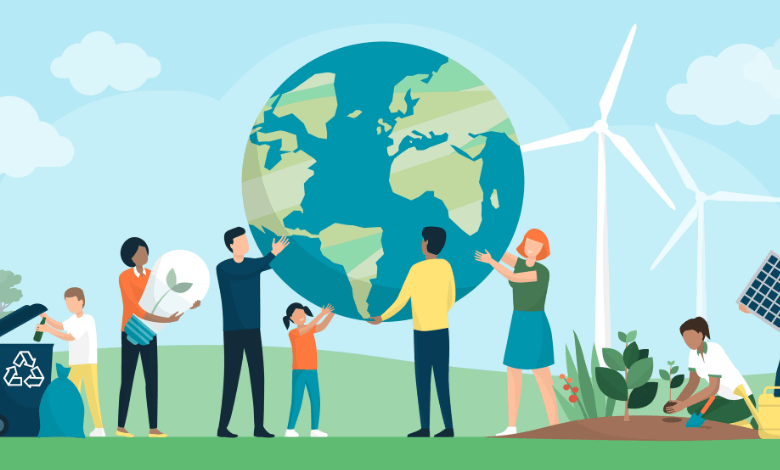Charting a Greener Future: UN’s Global Stocktake Explained

Recently, the UN published what amounted to a review of its efforts to address climate change. It is known as the Global Stocktake and is the outcome of two years of evaluating how far off course we are in lowering the risks associated with climate change. Additionally, it will provide recommendations for constructive measures to address the issue.
The UN Framework Convention on Climate Change (UNFCCC), which is in charge of the assessment, declared that now is the time to examine the condition of the earth closely and map out a better course for the future.
When governments gather in Dubai at the UN’s COP28 climate conference at the end of the year to discuss how to intensify global climate action, this guidance will be essential. COP28’s stocktake is an essential component.
A look at the stocktake and its significance is provided below.
The Global Stocktake: What Is It?
It is required by the 2015 UN Paris Climate Agreement and is a recurring evaluation of global climate action.
As a fundamental component of the Paris Agreement’s design, which calls for countries to gradually increase the ambition of their national climate plans every five years, this is the first Global Stocktake since the agreement’s adoption.
The goal of the stocktake is to advise countries on the appropriate level of ambition for their updated climate plans. It also serves as a guide for countries looking to increase financial support for international cooperation and climate action.
The next round of revised national climate plans, or “nationally determined contributions,” or NDCs, are required by the Paris Agreement and are due in 2025.
Also Read: Nature’s Partners: Pollinators, Global Warming, and Beverage Industries
The purpose of conducting the Global Stocktake every five years is to make sure that nations and businesses are acting with increasing ambition in order to maintain the goals of the Paris Agreement within reach.
What steps are involved?
Building resilience to climate impacts, limiting temperature rise to well below 2 degrees Celsius and, ideally, aiming for 1.5 degrees Celsius, and coordinating financial support with the scale and scope required to address the climate crisis are among the main objectives of the Paris Agreement.
The Intergovernmental Panel on Climate Change (IPCC), the UN’s body tasked with overseeing climate science, and the UNFCCC collaborated over the last two years to develop the assessment utilizing the most recent scientific research. Other UN agencies, governments, non-governmental organizations, and international organizations like the International Energy Agency have also contributed.
Following a series of technical reviews, the draught was released on Friday, initiating a political process wherein governments will take the findings—which have been refined—into consideration.
According to the World Resources Institute (WRI), a think tank with headquarters in Washington, the draught is anticipated to highlight the gaps that still need to be filled and offer specific recommendations on how to close them. It will also highlight how far behind the world is from reaching the objectives of the Paris Agreement.
In addition to measuring emission reductions, the assessment will track how well nations are doing at strengthening their resilience and lowering their susceptibility to the effects of climate change. Additionally, it will examine “means of implementation,” or quick fixes for the climate crisis, including technology transfer, funding for developing countries, and assistance to the poorer countries.
What is our degree of diversion?
Based on current emissions, primarily from burning fossil fuels, the world could warm by more than 1.5 degrees Celsius in less than ten years, with an average increase of 1.2 degrees Celsius over pre-industrial levels already.
The IPCC states that global greenhouse gas emissions must peak no later than 2025 and then decline by 43% by 2030. However, there are no signs that this will happen, and the world is increasingly at risk from wildfires, floods, extreme heatwaves, and hotter oceans, all of which harm fisheries and coral reefs.
How do investors put it?
“The initial worldwide inventory is important. We are not only thoroughly assessing our advancements since the Paris Agreement, but we will also have a clear understanding of the gaps that require immediate closure,” stated Mr. Frederick Teo, CEO of Temasek-owned investment platform GenZero.
Nations are building the infrastructure and policies required to assist in the fight against greenhouse gas emissions. “This is demonstrated by other emissions-focused regulations and more aggressive carbon pricing,” he continued.
However, Mr. Teo stated that more work must be done and that there are increasing risks associated with inaction, such as the effects of accelerated climate change and the long-term welfare of individuals and communities.
In the long run, he claimed, “doing nothing (or not doing enough) will be more costly,” particularly for future generations.
“Governments face a challenging task: striking a balance between the immediate, urgent demands of the present and the requirements of the future. Mr. Teo continued, “True leadership is required to persuade people to make the difficult short-term decisions necessary for future generations to prosper and thrive.
The United Nations Global Stocktake is a critical component of international efforts to combat climate change. It serves as a comprehensive review mechanism designed to evaluate progress toward the goals of the Paris Agreement and assess global climate action. This summary takes you through the essential aspects of the Global Stocktake, highlighting its purpose, process, and potential impact on our collective fight against climate change. By understanding the significance of this initiative, we can appreciate how it contributes to charting a greener and more sustainable future for our planet.



